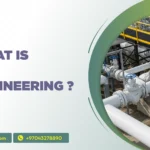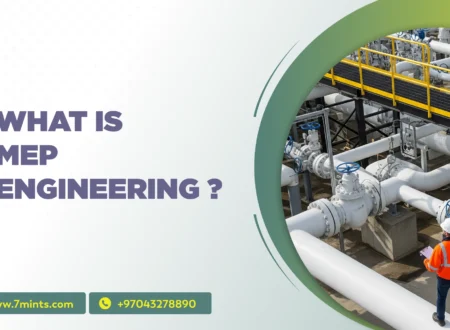The Modern buildings are not just brick and mortar but rather highly integrated systems where safety, sustainability, comfort, and performance coexist. Behind this, a smooth experience stands MEP engineering—the discipline of Mechanical, Electrical, and Plumbing systems. MEP engineers provide infrastructure that makes buildings livable, functional, energy-efficient, and safe.
Whatever the context may be, a skyscraper, a hospital, a school, or a manufacturing plant, MEP (Mechanical, Electrical, and Plumbing systems) engineers design and develop a functional realm of safe and efficient working. How exactly do they do that? What strategies, systems, and tools do they employ? The design of a safe and efficient building finds its focus on planning, system integration, code conformity, use of technology, and sustainability, as MEP engineers might say.
Understanding the Role of MEP Engineering in Building Design
Can one consider MEP as a term that constitutes the operational systems of a building? It encompasses everything that includes air-conditioning, power distribution, lighting, fire protection, water supply, and sewage disposal. These services provide comfort to the occupants and, in turn, safety from energy dissipation or building materials.
MEP engineers collaborate closely with structural engineers, architects, and contractors. Their designs complement the architect’s intentions while enabling an efficient existence of the building throughout its life. Their work is much more than mere calculations and drawings—it is about creating systems that are mathematically clever yet insurgent to serve human needs.
Integrated Planning from the Start
One of the chief contributions of MEP engineers toward safe and efficient building design is their early involvement in the project. This early-stage planning leads to better coordination of the structural and architectural design with the building systems.
While early MEP integration considers possible clashes of ductwork, piping, beams, and walls before the construction stage, the possibility of costly changes during construction is reduced, while project performance easily flows on. Space planning and access to the system for maintenance also go hand in hand with early coordination.
Making Sure That the Building Meets Codes and Safety Standards
Another major reason for MEP engineers is safety, which they realize by implementing the national and international building codes. These codes provide for fire safety, electrical wiring, ventilation, water pressure, and more. Check out our latest blog post on What is MEP engineering?
MEP engineers design their systems with the intention to at least meet safety standards prescribed in codes such as the National Electric Code (NEC), International Building Code (IBC), ASHRAE standards for HVAC, and NFPA codes for fire protection. This compliance ensures that the building is legally accepted and has minimized risks that could threaten the occupants, like fire, electrocution, gas leakage, and structural failure.
Designing an Energy-Efficient HVAC System
Actually, an HVAC system is a major consumer of energy in any building. MEP engineers focus on HVAC designs that give the occupants comfort along with energy-level efficiency. That means choosing the right type of HVAC system, equipment sizing, ductwork placement, insulation, and zoning.
Energy modeling software allows MEP engineers to simulate the real-world performance of various HVAC designs. They could optimize for temperature control, air quality, humidity, and noise reduction while reducing power consumption. With active system control through smart thermostats and energy recovery ventilators, and allowed chillers, greatly improved system performance will be achieved.
Electrical Systems for Power, Lighting, and Backup
For a safe and functional building, electrical design is paramount. MEP engineers come up with detailed electrical layouts for lighting, power supply, backup generators, elevators, and communication systems. Such layouts make sure that every outlet, switch, and light source is strategically placed for proper use and adherence to codes.
Electrical loads are calculated to ensure no overloading on a circuit and that the desired capacity is achieved. Grounding systems and circuit protection aim to avoid occurrences that would increase chances for electrical fires and outages. During emergencies, the MEP engineer ensures that UPS and generators are set up for essential system operations in the event of a complete or intermittent power loss.
Smart Lighting and Controls
Lighting affects everything from energy consumption to the productivity of employees. MEP engineers adopt smart lighting solutions that automatically adjust their operation based on the occupancy and daylight levels. Such systems conserve energy and ensure longer life for the light fixtures.
Advanced lighting design includes LED lighting, dimming controls, occupancy sensors, daylight harvesting, and programmed lighting scenes. Integration into the BMS system provides further opportunities for energy savings and less operation costs through real-time monitoring and control.
Water Supply and Plumbing Systems
A proper water management system poses a considerable challenge in the designing of any residential or commercial building. MEP engineers plan plumbing systems to ensure the supply of safe water of adequate pressure and temperature.
Other measures of water conservation that engineers apply are low-flow fixtures, graywater recycling, and rainwater harvesting. Maintenance tests are conducted on pressure, pipe material selection, and layout planning to reduce maintenance problems and extend system life. Proper sewage and venting systems avoid odor nuisances, hygiene issues, and occupant safety concerns.
Fire Protection and Life Safety Systems
Fire protection planning is the one thing that truly rounds off building design. This category of MEP engineers designs fire suppression systems, which encompass sprinklers, fire hydrants, smoke detectors, and fire alarm panels. These systems are designed as set forth in national codes and are further customized based on the building’s size, type of occupancy, and risk considerations.
Building Automation and Control Systems
Buildings are becoming more modern and thus smarter. MEP systems provide automation, quality control, and monitoring of HVAC, lighting, fire safety, and security systems through a centralized dashboard. These systems point towards making the building more responsive to its surroundings, energy-conscious, and easier to run.
By means of automation, engineers can enforce schedules, measure use, and get warnings about system failures. Maintenance becomes predictive, energy usage is minimal, and user comfort is at its zenith. The automation also increases emergency responses by providing real-time data on the status of the systems that go into any emergency.
Coordination Through BIM (Building Information Modeling)
Coordination is essential for the success of MEP engineering, more so in large-scale projects. The engineers use BIM (Building Information Modeling) to create 3D models showing architectural, structural, and MEP system interaction.
With BIM, teams avoid clashes at the design stage instead of coming across them during installation. It ensures better flow of installation routes, better access points, and better clearances for maintenance. It even enables better documentation and allows stakeholders to visualize complex systems, thus improving collaboration and decision-making.
Sustainability and Green Building Certifications
Today’s MEP engineers are sustainability professionals. They work to lessen the carbon footprint of buildings with energy-efficient technologies and renewable energy sources, along with green construction methods.
Engineers design buildings to meet green certification requirements, such as LEED (Leadership in Energy and Environmental Design), BREEAM, or IGBC. Their focus includes low-energy HVAC systems, solar power, water conservation methods, and energy monitoring tools. Sustainable design can keep the world safe and promise lower operating costs plus long-term value for the building.
Continuous Testing and Commissioning
Good design for safe, efficient systems isn’t the end of the process; the installations need to be vigorously tested. MEP engineers have an important role in commissioning, a process that seeks to ensure that every system is performing as intended prior to building occupation. The process includes pressure testing pipes, regulating airflow, checking control systems, and verifying power supply systems.
Proper commissioning recognizes and timely rectifiespredicaments; this intervention will improve the long-term system’s performance. Training will be provided to the building operator with elaborate manuals to ensure that building systems are aptly managed on their own over time.
Maintenance Planning and Life Cycle Costing
MEP engineers take into consideration the entire lifespan of a building system—not merely its first installation. They plan for the maintenance access, durability, replacement of parts, and the operational costs over time.
This lifecycle costing is useful for a building owner to understand total expenditure in time, not just at the initial pecuniary investment. The engineers, therefore, recommend systems and components that will profit the building in return for performance, reliability, and cost—so that the building remains safe and efficient for decades to come.
Adapting themselves to changing technologies and user needs
Finally, MEP engineers change their practices as technology trends and user expectations evolve. From AI-controlled energy management systems to IoT-connected appliances to low-carbon materials. Engineers keep progressive standards, software, and hardware information current merely to facilitate modern-day solutions. This flexibility has thus prohibited buildings from being blocked into a future that remains path-dependent and, at least theoretically, may refuse tomorrow’s innovations without question about safety or efficiency.
Conclusion: Modern-Day Design Building Protectors: MEP Engineers
MEP engineers do more than draw diagrams or design equipment—they engender safety, efficiency, and sustainability into buildings. They engineer safe and comfortable living and working environments through intelligent planning, systems integration, advances in technology, and compliance with codes.
From HVAC and power to plumbing and automation, MEP engineering gets into every quarter of a building. Contact us as MEP engineers also make buildings sustain themselves for generations by evaluating performance, improving design, and considering future life.










1 Comment
Comments are closed.